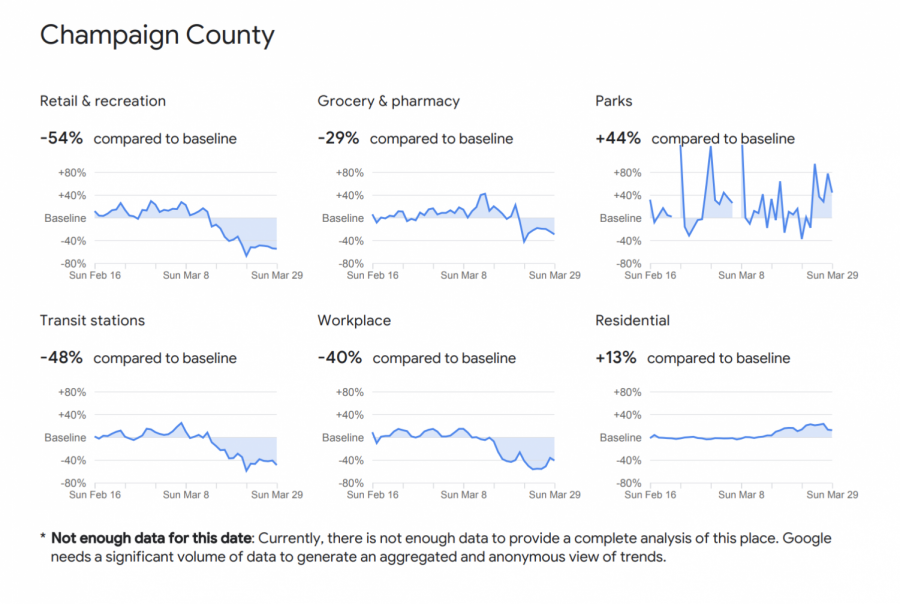Task force assists in fight against coronavirus
Apr 8, 2020
Last updated on April 9, 2020 at 06:39 p.m.
In response to the global coronavirus pandemic, University researchers in engineering and other medical fields have created a COVID-19 task force to analyze data on the situation.
The interdisciplinary task force, formed through the Health Care Engineering Systems Center, more aptly called the COVID-19 Data Task Force, according to Dr. Thenkurussi “Kesh” Kesavadas, presents a data and artificial intelligence-driven approach toward tracking the virus.
Kesavadas is the director of HCESC and a member of the task force. According to him, the task force’s work may be crucial to overwhelmed hospitals that are unable to process information on the disease in a timely manner.
“More hospitals do not have the ability to crunch numbers when things are moving very fast, but there are a lot of needs hospitals have to identify,” Kesavadas said.
Get The Daily Illini in your inbox!
By processing this information, hospitals can better understand how to proceed when resources are low, but patient numbers keep rising.
Problems like these, while crucial, are not the task force’s entire agenda. Other researchers, like Roy Campbell, an emeritus computer science professor who is working with Kesavadas, are trying to model the progression of the virus in order to predict how it may spread over time.
To do this, Campbell utilizes deep learning, a form of machine learning, and “Long Short-Term Memory,” which replicates the behavior of neural pathways and helps to mitigate “gaps” in information.
“The data we’re getting is kind of rough,” Campbell said. “It’s not updated at regular intervals; it’s kind of spasmodic, and it depends, sometimes it includes some numbers and other times it doesn’t, so it’s a little bit random. LSTM is a pretty good way of covering those gaps.”
According to Campbell, although nothing is set in stone, it currently appears that the pandemic will peak sometime around late April, at least in Chicago.
Although the task force is centered at the University, with contributions from the University of Illinois at Chicago and hospitals in Peoria and Urbana, not all the analyzed data has come from Illinois. According to Kesavadas, the task force has looked at open source data from all over the U.S., as well as information collected by sources like Johns Hopkins University.
“Members are working with many, many different campuses, both in Chicago and outside of this space,” Kesavadas said.
Sometimes, the compiled data may be tricky to access for those without prior knowledge of how to find it, according to Kesavadas. Not only is the task force collecting and analyzing this data, but it’s also making it more readily available for future use.
Kesavadas pointed out that one of the benefits of having a task force like this is to help focus the efforts of many researchers.
“Scientists don’t have to be calling the hospitals one at a time to get the same data,” he said. “They all can work together and collaborate rather than have 20, 30 people, trying to solve the same modeling problem.”
Still, one of the challenges of conducting research with this project is the fact that almost everything is being done from home.
“You don’t have any day-to-day interaction,” Campbell said. “What you have to do is to accommodate with actually setting up regular Zoom meetings and talking to people and sending emails that you wouldn’t have necessarily sent in the past.”
In part to help with this separation, a virtual COVID-19 summit was held on Zoom this Monday. It was a learning experience for many, including those like Campbell, who learned more about how hospitals in Chicago are handling and interpreting the virus.
One of the most trying questions currently being discussed regards understanding the effectiveness of mitigating factors like the stay-at-home order.
Although it is currently unclear to what extent the spread of the virus can be prevented, Campbell is certain we’re better off at home.
“The alternative, at least according to the models, is not something that we want to bear. It would have been awful,” Campbell said. “I think there’s a lot of people in this state that are doing the right thing to help try and reduce the overall impact (of the virus) on our population in Illinois.”






